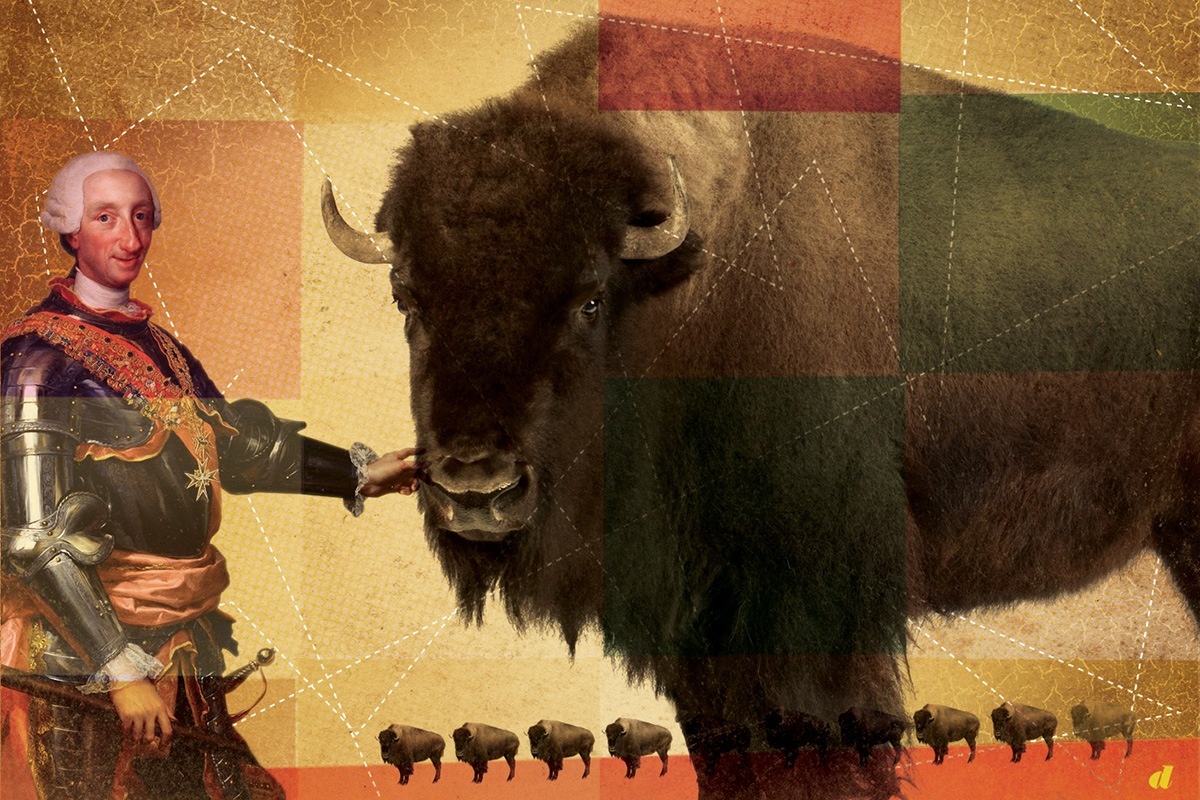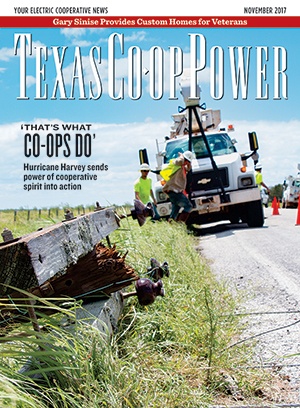When King Carlos III took the Spanish throne in 1759, he vowed to increase Spain’s influence in the European scientific community and diversify the Spanish economy. With these ideas in mind, Carlos ordered officials to ship him foreign creatures from all over the world so he could display them in his personal zoos. According to Bradley Folsom’s article An Interesting and Odd Present in Southwestern Historical Quarterly [July 2016], Carlos acquired alligators, monkeys, anteaters, leopard cubs, iguanas and a hermaphroditic horse. But he longed to possess a herd of American bison, which he planned to domesticate for their wool and “tasty meat” and for use as draft animals.
The bison had other ideas.
Texas, then a part of New Spain, seemed the most likely place to capture the animals, and the king sent word to acquire and transport as many American bison as possible. The order landed on the desk of Texas Gov. Domingo Cabello y Robles, who sent an experienced hunter, Carlos Rioja, to capture the animals alive, drive them hundreds of miles to Veracruz and launch them on a voyage to Spain. Had he consulted Native Americans, he would have known that a herd of cantankerous bison, when threatened, scatters in every direction.
Europe has bison, but they are smaller and lack the pronounced hump, low-hanging head, short horns and wooly coats of American bison, which had been described by Spanish explorers as “large hump-backed animals with very long beards like goats, tails they carry erect like a scorpion when running and hair rough as a lion’s mane but wooly like a sheep.”
In May 1779, Rioja gathered some assistants from the San Antonio area along with “substantial provisions” provided by the governor and set out on a bison roundup. They were successful in locating and capturing bison; the difficulty came when they tried to drive the animals across the plains. Rioja discovered that the bison were inclined to “kill themselves in anger” when restrained, or succumbed to heat stroke along the way. The herders arrived at their destination with only a single female.
Rioja’s second expedition did slightly better, rounding up 20 animals. But the searing June heat winnowed them out on the trail, and only two 6-month-old calves reached San Antonio. This dismal record prompted a decision to wait for winter to launch a third expedition. In the interim, ranchers in La Bahia sent word that they had captured four bison.
“It is impossible to explain to Your Lordship,” the governor wrote on January 10, 1780, “the pains I am taking to ensure success, sparing no expense or other re-quirement, for it is my hope to pursue the delight of serving and pleasing Your Lordship.”
Cabello assigned an officer and well-known hunter to escort the six remaining animals to the ship. Four of the six died, leaving a single male and a female for the king. Recognizing the stakes, the officer suspended the animals in leather harnesses in the hold of the ship to keep them from harming themselves, fed them corn and soaked them with water every day to avoid overheating. In spite of these extreme measures, the male bison died upon arrival in the Spanish port of Cádiz.
Carlos developed a great fondness for the remaining animal, moving it to the royal family’s spring residence, where it joined camels, ostriches, an elephant and other exotic animals. A sculpture of the buffalo graced the estate’s entrance. The military officer who escorted the buffalo to Spain remained until the animal died in 1784, whereupon he was promoted to the rank of lieutenant and given a reward of 10,000 reales and return passage to Texas.
“It has always been customary for monarchs to display their greatness by keeping the rarest and most unusual species of animals, plants and fruits from other countries in their palaces and royal houses,” says Carlos Gómez-Centurión in his article Treasures Fit for a King, but European courts were hard-pressed to secure America’s largest land mammal for their collections.
——————–
Martha Deeringer, a member of Heart of Texas EC, lives near McGregor.


